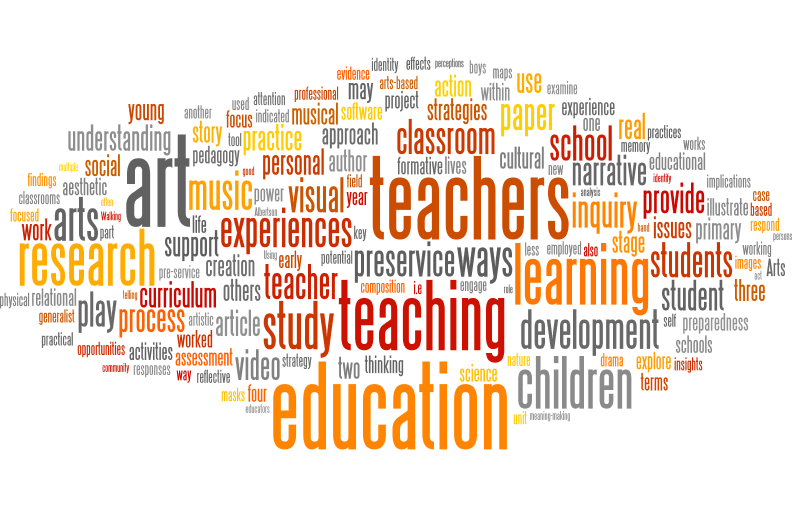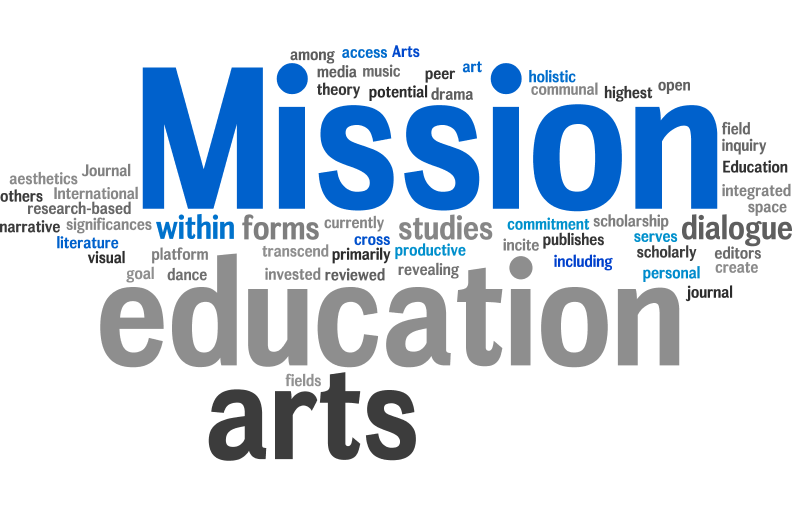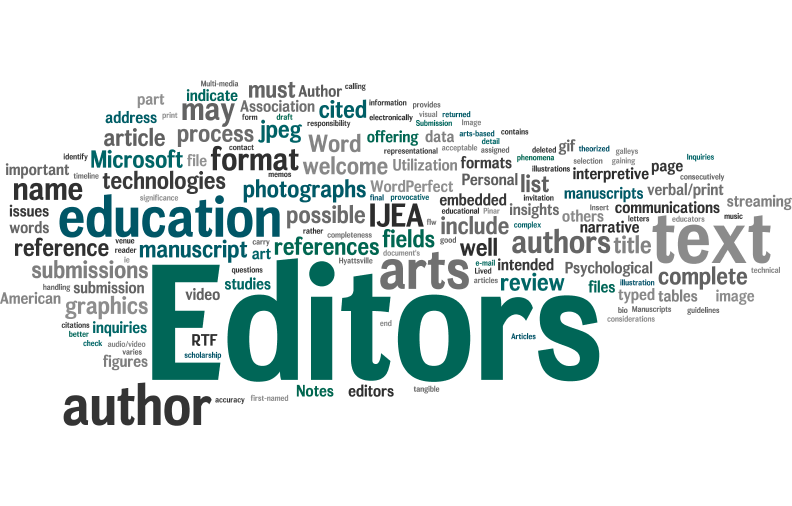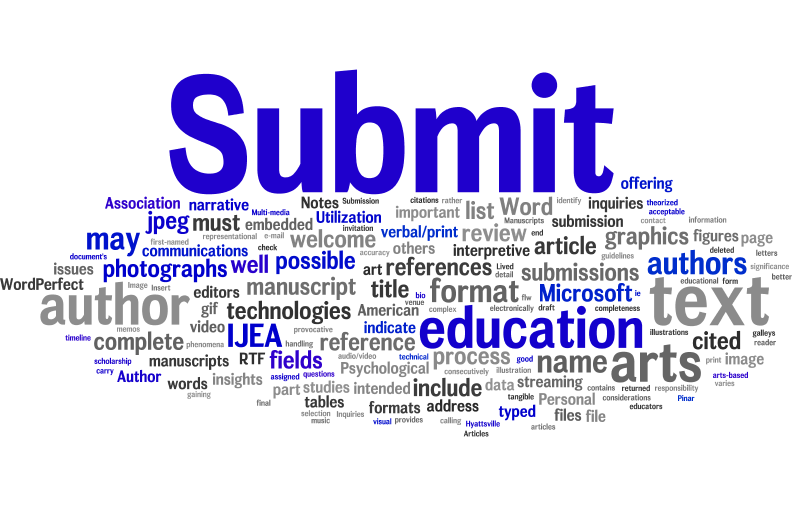2007 Volume 8
Articles and Abstracts

Articles
Volume 8 Number 1: Costantino, Tracie. Articulating aesthetic understanding through art making.
In this article I will present case study research of an elementary school art teacher who provided both verbal and visual means for students to respond to art while on a museum field trip. I will focus on how the studentsi drawings from memory and artwork in their sketchbooks present compelling articulations of their understandings of certain artworks. I will also discuss how their reflective writing about the field trip supports and elaborates on their visual articulation, and how the studentsi works are manifestations of qualitative reasoning, visual thinking, and imaginative cognition (Efland, 2004) in addition to linguistic thinking. Through this discussion, I hope to illustrate the essential role of imagebased, nonlinguistic thinking (as in visual thinking, qualitative reasoning, and imagination) in interpreting and expressing understanding of works of art.
Volume 8 Number 2: Lind, Vicki. High quality professional development: An investigation of the supports for and barriers to professional development in arts education.
This study focused on a model of professional development designed to support and encourage arts educators to increase their understanding of student learning in the arts, broaden their knowledge of the Visual and Performing Arts Standards, build upon their repertoire of teaching methods and assessment strategies, and improve leadership skills. Data included 300 hours of observation, focus group and individual interviews, written responses to reflective prompts, unit plans, video and audio tapes, and samples of student work collected over a two year period. Findings indicated that working collaboratively, focusing on student learning, and identifying and planning curriculum around issues central to the discipline positively impacted teachers work. The issue of time constraints was consistently identified as a barrier to professional growth.
Volume 8 Number 3: Wallin, Jason. Between Public and Private: Negotiating the Location of Art Education
This article seeks to articulate developing trends in art education and practice, locating such movements within the broader cultural contexts of globalization, neoliberal capitalism, and postmodernity. Against this more general synopsis, the autobiographical position of the author as a student and teacher of art will be elucidated as inextricably entwined with such cultural movements. This entwinement will be understood both in terms of its capacity to "position" the subject, and yet concomitantly as a site of disavowal, refusal, and subjective agency. In this manner, the personal commitment of the author to art education will be developed in a way to implicate early school and familial experiences with art. Such early autobiographical experiences arguably form the coordinates of our identities as art educators, and similarly, constitute the key issues with which we must necessarily grapple in pedagogical practice. It is in negotiation with such issues and early enculturation that this article argues our relationship to art curriculum and practice is located.
Volume 8 Number 4: Macintyre Latta, M.; Buck, G. & Beckenhauer, A. Formative assessment requires artistic vision
This two-year study focused on the lived terms of inquiry in middle-school science classrooms. The conditions that enable teachers to see and act on science learning as ongoing inquiry were deliberately sought in Year 2. Nine science teachers participated in search of capacities connecting curriculum, teaching, and assessment for greater student and teacher inquiry. An online logbook chronicled this search, serving as a dialogic medium revealing a movement of teachers seeking out and seizing back possibilities for teaching and learning in relation to the given realities of classrooms. The nature and role of formative assessments in support of learning were encountered as the obstacle to be worked out in teachersi practical action. The necessary interpretive eye and capacity to act in accordance with the dynamic character of formative assessments became the task at hand for teachers and researchers. This task demanded artistic teaching visions, attending to the creation of student meaning on an individual and collective basis. The difficulty, alongside the necessity, of educating artistic teaching visions offered glimpses into how formative assessment use holds potential to restore the participatory dynamic integral to learning. The philosophical/theoretical ground of arts based educational research was found to offer much potential to science inquiry, linking processproduct- learner in support of formative assessment use and offering implications for a participatory mode of professional development.
Volume 8 Number 5: Hudson, P., & Hudson, S. Examining preservice teachers' preparedness for teaching art.
The Australian Federal Government's call for another teacher education inquiry aims to investigate preservice teacher preparedness for teaching. Art education was selected for this study as the teaching of art education in primary schools occurs in less than ideal conditions and may often be avoided by generalist primary teachers (Russell-Bowie, 2002). Eightyseven final-year preservice teachers were surveyed on their perceptions of their preparedness for teaching primary art education at the conclusion of their Bachelor of Education program. The 39 survey items were derived from the New South Wales Creative Arts K-6 State Syllabus (Board of Studies, 2000) across four stage levels (i.e., early stage 1, stage 1, stage 2, and stage 3). Percentages and mean scale scores suggested that these final-year preservice teachers believed they were generally prepared to teach art education in primary schools as a result of a preservice teacher education visual arts unit. Nevertheless, more than 10% of preservice teachers indicated they could not agree or strongly agree that they could provide 20 of the 39 teaching practices advocated by the syllabus and 20% indicated this for 7 of the 39 teaching practices. Tertiary education institutions need to be proactive in responding to the challenge of determining preservice teachers' preparedness for teaching. Surveys linked to a state syllabus may assist in assessing preservice teachers' perceptions of their preparedness for teaching and may provide valuable information for further development of tertiary education coursework.
Volume 8 Number 6: Brown, Andrew R. Software development as music education research.
This paper discusses how software development can be used as a method for music education research. It explains how software development can externalize ideas, stimulate action and reflection, and provide evidence to support the educative value of new software-based experiences. Parallels between the interactive software development process and established research methods are drawn, with particular focus on action research, case study, and activity theory. A new approach to arts educational research called Software Development as Research (SoDaR) is proposed. The paper includes examples from the author's use of this approach when developing the jam2jam software to facilitate networked music improvisation experiences for young children.
Volume 8 Number 7: Taylor, P. G., Wilder, S. O., & Helms, K. R. Walking with a Ghost: Arts-based research, music videos, and the re-performing body.
In folk-rock duo Tegan and Sara's 2004 music video Walking with a Ghost, two women face one another, mirrored images in black and white. One is dressed in black - grunge shirt, pants and boots, while the other stands barefoot in a simple white dress. The black-clad figure removes three red paper hearts from her twin's chest, leaving crimson gashes in her clothing as the white-clad twin morphs into three mutilated figures. The wounded trio sings to their other self, "no matter which way you go, no matter which way you stay, you're out of my mind, out of my mind . . ." In this article, we respond to the ways that Tegan and Sara's music video relies on their twin bodies as visual and metaphorical narrative devices as well as sites for re-inscribing cultural memory. We do this by presenting and analyzing our personal audiovisual responses (hypertextual video shorts) to Walking with a Ghost. Employing an autoethnographic arts-based research approach, we visually and metaphorically inscribe our own video bodies with text and images to explore personal and cultural reactions. Further, using the experiences of a graduate art education technology class' work with the video, we share the curricular implications for understanding how memory and the body affect, inform, and alter human perception.
Volume 8 Number 8: Wright, S. . Graphic-narrative play: Young children's authoring through drawing and telling.
This arts-based research illustrates how young children engage in 'graphic-narrative play' - a personal fantasy-based experience depicted on paper - while representing imaginary worlds centered on the topic, what the future will be like. The descriptions show how the children not only made representations, but also manipulated these in abstract ways as they created and recreated images, ideas and feelings. The findings illustrate how the child becomes a cast of one, taking on multiple roles (i.e., artist, author, director, scripter, performer and narrator) and selecting when and how to play with all the available voices offered through the multimodal media - drawing, 'telling', dramatization, expressive sound effects, gesture and movement. These multiple texts involved embodied authoring - layers of visual and physical action, character development, plot scheme, scenery and running narrative working in harmony, simultaneously. Children's open-ended construction of meaning surfaced content that reflected universal story themes such as good-evil and capturing-defending, and their voices often were powerful, humorous, philosophical and reflective. Yet the sequencing of events did not necessarily follow linear structures - instead, the children worked within fluid structures.
Volume 8 Number 9: Albertson, C., & Davidson, M. Drawing with Light and Clay: Teaching and Learning in the Art Studio as Pathways to Engagement.
In this essay, Albertson and Davidson explore the attributes of photography and ceramic arts education to identify eight key elements integral to engagement in these art studios for under-served and disenchanted learners. They suggest that these key elements can provide numerous clues as to how teachers and school communities might reimagine both their mission and approach to classroom practice. Through this exploration, they relate literature on apprentice models of teaching and learning, relational education, resiliency theory, and care in the context of classroom practice to their experience and research into teaching and learning in photography and ceramic arts. Albertson and Davidson believe that what is good for the most vulnerable learners, is good for others too, and by bringing these attributes to light, it is their goal to illustrate some of the ways that all teachers might build pathways to engagement for their own "tough audiences" in all subject areas.
Volume 8 Number 10: Zoss, M., Smagorinsky, P., & O'Donnell-Allen, C. Mask-Making as Representational Process: Situated Composition of an Identity Project in a Senior English Class.
Eisner, Gardner, and others have argued that the arts should be better integrated into the K-12 curriculum. In this study we examine three high school senior boys who, as part of a unit of instruction on identity, each produced a mask through which he artistically expressed his sense of self. Using a sociocultural framework based in the work of Vygotsky, we analyzed the boys' composition of their masks in terms of their goals for working on the project, the material and psychological tools they employed to produce the masks, and the settings in which they learned how to use their compositional tools for such purposes. Based on both concurrent and retrospective protocols that the boys produced in conjunction with composing their masks, we investigated their processes of composition as what Gee terms identity projects; i.e., as efforts to project themselves into their mask texts and as part of their long-term projects to explore and develop their personal and socially-situated identities. Each participant used the mask-making composition as an occasion for inscribing his experiences, beliefs, and emotions into the text, albeit in different ways and toward different ends. The study concludes with a consideration of the use of arts in literacy education, a reconsideration of the limitations of language-based-only conceptions of literacy, and the possibilities for expanded learning opportunities when English/Language Arts classes open up students' textual tool kits to allow for broader opportunities to engage with the curriculum.
Volume 8 Number 11: Davenport, M. G. Between Tradition and Tourism: Educational Strategies of a Zapotec Artisan.
This case study examines the teaching and learning strategies employed by a Zapotec weaver in Oaxaca, Mexico, to draw attention to the personal agency of indigenous artisans participating in the tourist economy, and to examine ways in which non-formal and informal education in skills and understandings related to art can function in the lives of real people, especially members of less privileged cultural groups. Among the strategies employed by this artisan are intergenerational transfer, self-directed research, experimentation, and workshops. Implications for art education include consideration of economic incentives and other motivations for art-related learning in this and other settings.
Volume 8 Number 12: Lynch, H., & Allan, J. Target Practice? Using the Arts for Social Inclusion.
Use of creative processes as a tool for social inclusion has gathered momentum in recent years. This article reports the views of education professionals based in Scotland on the use and effects of targeting. While this strategy aims to improve access to those communities considered marginal, it is apparent that some of the effects are detrimental to the development of an equitable approach. Using the framework of social capital we gain insight into strategies which enable difference to become positive and where the top down mechanism of targeting is replaced by a dialogical exchange.
Volume 8 Number 13: Beattie, M. Creating a Self: A Narrative and Holistic Perspective.
The paper presents insights into the creation and re-creation of a narrative from the perspective of two female students, Phillipa and Eva, at Corktown Community High School. Corktown is an alternative high school which focuses on the development of the whole person-creative, intellectual, social, emotional, aesthetic and physical. The school is connected to the external community in significant ways, and there is an emphasis on freedom of expression, self-government, and autonomy within a collaborative work culture. Their narrative excerpts show the interconnectedness of the intellectual, imaginative, emotional, and social dimensions of their lives, and the ways in which they bring all these to bear on the creation of an identity that is true to the persons they are and to the persons they want to become. Phillipa and Eva provide insights into the realities and complexities of adolescents' lives, and the ways in which these two young women learned to refigure the past and to engage in the ongoing process of creating new narratives for their lives in which they could be successful both personally and academically.
Volume 8 Number 14: Aitken, V., Fraser, D., & Price, G. Negotiating the Spaces: Relational Pedagogy and Power in Drama Education.
While there is a growing body of literature on relational pedagogy as a concept, less attention is given to the details of just how relational pedagogy manifests in classroom practice. Similarly, while issues of power, democracy and co-constructed learning feature in contemporary research, the details of how power relationships can be effectively altered between teachers and children warrants closer scrutiny. This paper explores how pedagogy is enhanced when spaces are negotiated between teachers and children in the real and fictional worlds of drama. The findings emerge from a two year collaborative research project between generalist elementary teachers and university researchers. Salient issues of trust, power sharing, and metaxis, which are part of relational pedagogy in the drama classroom, are explored. In particular, the paper discusses how traditional power and knowledge positions are 'disrupted' through the drama strategy of 'teacher-in-role' - a strategy with both political significance and pedagogical force.
Volume 8 Number 15: Blair, D. V. Musical Maps as Narrative Inquiry
This study explores the metaphorical relationship between the process of narrative inquiry and the process of "musical mapping." The creation of musical maps was used as a classroom tool for enabling students' musical understanding while listening to music. As teacher-researcher, I studied my fifth-grade music students as they interacted with music and one another during the creation of the maps. Their conversation with the materials of music and map, with each other as collaborators, and later with the class as audience parallels the process of narrative inquiry as the students experienced the music, constructed their story, and shared their story of the musical experience. Like narrative, the process of creating a musical map serves as a form of inquiry, enabling understanding of an experience and affecting change in self through the living and constructing of the story and affecting change in others through the sharing and telling of the story.
Volume 8 Number 16: Bhroin, M. N. "A Slice of Life": The Interrelationships among Art, Play and the "Real" Life of the Young Child
This study examines the interrelationships among art, play and "real" life, as perceived by young children. Twenty-one children aged four and five in their first year of formal schooling in Ireland, were observed during art-related play activities and classes over a period of four months in 2004. Research data consisted of art works (both original and photographed), field notes, video recordings of children's behaviours and mini-interviews with the children. Data analysis revealed the multifaceted interrelationships between art, play and real life among the children. All children showed evidence of intertwining art, play and "real" life experiences in all strands of the visual arts curriculum. Individual differences in "cognitive style" unrelated to gender also emerged. Some worked quietly concentrating completely on the process and product in hand while others verbalised what was going on as they worked. Just over half of the children extended their actual experiences into the realm of fantasy in their art and play while the remainder tended to be factual, depicting and re-enacting "real" life events as they experienced them. These findings have educational implications as young children's artistic play activities are an important element in pre-service teacher education and in the teaching of Visual Arts at the Primary school level.
Volume 8 Number 17: White, B. Aesthetic Encounters: Contributions to Generalist Teacher Education
This article describes the learning experiences of three pre-service teachers within a university-level course entitled "Aesthetics and Art Criticism for the Classroom." Discussion is focused on the nature of the meaning-making that emerges from aesthetic encounters and its educational value. Specifically, what can pre-service generalist teachers learn from aesthetic encounters that they may ultimately apply in their own classrooms? For evidence of emergent meaning-making I rely on examination of what I call aesthetigrams. These are essentially maps of one's encounter with an artwork. They provide a basis for reflection on the encounter, for the student and for myself as the instructor, as well as insights into the nature of aesthetic learning.
Volume 8 Number 18: Hewson, A. Emotions as Data in the Act of Jokering Forum Theatre
For three years the author has been using Forum Theatre strategies as a means of experientially exploring classroom management with preservice teachers in a post- degree BEd program. During the third year, the author undertook an arts-based action research project to examine her actions as facilitator, or Joker, and to explore Forum Theatre's potential for redressing oppressions in a school setting. In the analysis of one challenging session, she suggests that emotions are important data to consider when deciding how best to respond in the moment, as Joker or as classroom teacher. Noticing responses of fear, anger or shame in oneself and others may help identify oppressive practices or tacit assumptions that deserve critical attention. The sociological concept of saving face has relevance for classroom management and is recommended as an area for further study.


